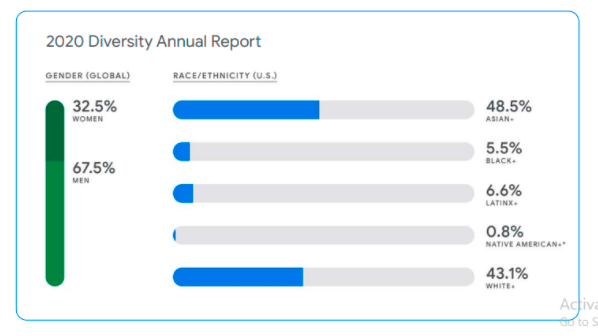Enough data is in to inform us that diversity and inclusion are not only worthwhile societal imperatives but also make for good practical business sense. D&I still matter in the workplace in 2023.
While knowing what to strive for is great, it’s only half the battle. We have to create and implement strategies that ensure we can effectively reach our objectives.
In this short article, we’ll take a look at what exactly diversity and inclusion in the workplace means, why it’s important, and how we can make the goal a reality.
Following - or leading - the trend to increase diversity and inclusion in the workplace should not be considered as an act of charity or compliance with yet another regulation on business. Rather, companies should seek to increase the level of diversity and inclusion in the workplace because it increases their market share and improves their bottom line. When D&I in the workplace lead to demonstrable positive results, that’s when we know it has been done right and that it’s sustainable.
Recommended ebook: 10-Step Diversity Hiring Handbook

If a recruiter notices a lack of diversity in the applications they receive, this should prompt them to reexamine the job description and/or the platforms used to advertise the position.
Diversity and inclusion don’t start at the hiring process. It should be in place well before that: at the conception of the position and the communication of the job being offered.
This is one of the main reasons why diversity is not enough. It must come with inclusion. This means that the diversity in a company’s workforce must be empowered to express its diversity.
Companies that are successful in increasing D&I in the workplace are always flexible companies. They do not strive to impose their way of doing things on their employees, but rather they strive to make those processes better and more effective by remaining open to the new perspectives and thought processes that come with having a diverse workforce.
It is important that your company reflects the values of your customer and that your company can be one that your customer can identify with.
While having a diverse workforce on the ground level is commendable, it does not mean that the company is diverse and that it benefits from inclusion. For D&I to be in effect and in order for the company to reap the rewards of D&I, there must be diversity and inclusion at the upper managerial and decision-making levels.
This post has been contributed by the team at Lensa.
While knowing what to strive for is great, it’s only half the battle. We have to create and implement strategies that ensure we can effectively reach our objectives.
In this short article, we’ll take a look at what exactly diversity and inclusion in the workplace means, why it’s important, and how we can make the goal a reality.
What is D&I and why is it important?
When we talk about D&I, we’re talking about much more than gender, ethnicity, or sexual orientation. A D&I approach seeks to have the makeup of the company - the employees, spokespersons, and representatives - more accurately reflect the makeup of the customer base and society at large that the company works within. This includes the diversity of thought, worldview, and priorities as well as other characteristics people identify with such as race, gender, age, etc.Following - or leading - the trend to increase diversity and inclusion in the workplace should not be considered as an act of charity or compliance with yet another regulation on business. Rather, companies should seek to increase the level of diversity and inclusion in the workplace because it increases their market share and improves their bottom line. When D&I in the workplace lead to demonstrable positive results, that’s when we know it has been done right and that it’s sustainable.
Recommended ebook: 10-Step Diversity Hiring Handbook

1 - Expand the talent pool
It stands to reason that when a company limits the talent pool from which they hire, they stand a much lower chance of getting the best people to fill the positions needed.If a recruiter notices a lack of diversity in the applications they receive, this should prompt them to reexamine the job description and/or the platforms used to advertise the position.
Diversity and inclusion don’t start at the hiring process. It should be in place well before that: at the conception of the position and the communication of the job being offered.
2 - Expand the perspectives
It makes little sense to strive for diversity and inclusion and not take advantage of the benefits that come with it. A diverse workforce - one where different thought processes and different ways to look at problems or challenges are celebrated and encouraged - can help a company stay innovative and current in a fast-changing economic landscape.This is one of the main reasons why diversity is not enough. It must come with inclusion. This means that the diversity in a company’s workforce must be empowered to express its diversity.
Companies that are successful in increasing D&I in the workplace are always flexible companies. They do not strive to impose their way of doing things on their employees, but rather they strive to make those processes better and more effective by remaining open to the new perspectives and thought processes that come with having a diverse workforce.
3 - Be a company we can identify with
Today’s consumer is looking for far more than simply purchasing a product or service. Today’s consumer demands an experience. It is no longer enough to simply provide the right product at the right price. Today’s consumer wants to buy from a company they are happy to identify with. Their purchases and the companies they are associated with form an integral part of their identity. Today’s consumer expresses him or herself through their purchases and through brand loyalty.It is important that your company reflects the values of your customer and that your company can be one that your customer can identify with.
4 - Inclusion happens at the decision-making level
D&I is diversity and inclusion. Inclusion means giving people a voice, giving them a say in defining company strategy, and empowering them to take the right actions to steer the company where it wants to go.While having a diverse workforce on the ground level is commendable, it does not mean that the company is diverse and that it benefits from inclusion. For D&I to be in effect and in order for the company to reap the rewards of D&I, there must be diversity and inclusion at the upper managerial and decision-making levels.
Recommended read: Embracing DE&I At The Workplace – #1 Back To The Basics
5 - If you’re doing it right, you should see quantifiable results
D&I is good for society, and it’s good for business. Successful implementation of D&I will yield an expanded customer base and an increase in customer loyalty. You will know your company has implemented a successful D&I strategy when you see the positive results.In a nutshell
Diversity and inclusion are not only important for the betterment of society as a whole, but it’s simply a fact of good business sense. By successfully diversifying your workforce at all levels of the organization, you will be taking an important step towards improving the quality of your workforce, building lasting relationships with your customers, and preparing for changes and fluctuations in the market and in the economic landscape.This post has been contributed by the team at Lensa.





 Busting the myth of the ‘perfect hire’ also keeps the hiring centered on skills, and not a bunch of keywords. Some skills are trainable, and a good candidate would be able to learn them on the job easily. More and more hiring managers are realizing this, and trying to hire generalists who have a hunger to learn and upskill, instead of chasing pedigree. As recruiters, it is our job to ensure our managers know the value of a candidate who is adaptable and quick to learn.So, instead of trying to hire the mythical ‘ideal hire’, widen the aperture to create multiple success profiles for each role and share them with your hiring manager. Then go back to the talent ‘farm’ you created in Step 1, and find people who fit these multiple success profiles.
Busting the myth of the ‘perfect hire’ also keeps the hiring centered on skills, and not a bunch of keywords. Some skills are trainable, and a good candidate would be able to learn them on the job easily. More and more hiring managers are realizing this, and trying to hire generalists who have a hunger to learn and upskill, instead of chasing pedigree. As recruiters, it is our job to ensure our managers know the value of a candidate who is adaptable and quick to learn.So, instead of trying to hire the mythical ‘ideal hire’, widen the aperture to create multiple success profiles for each role and share them with your hiring manager. Then go back to the talent ‘farm’ you created in Step 1, and find people who fit these multiple success profiles. 






















